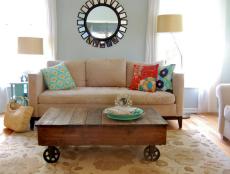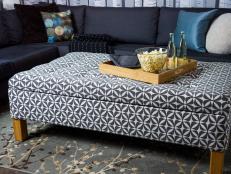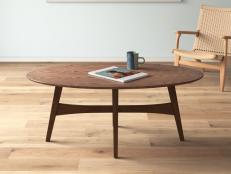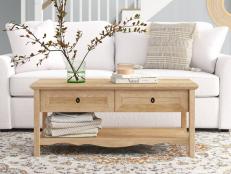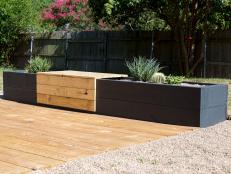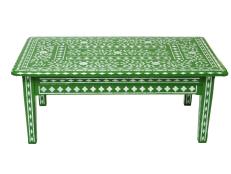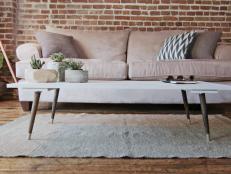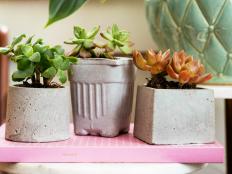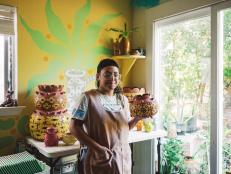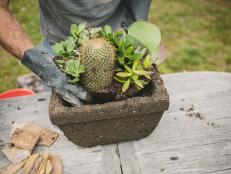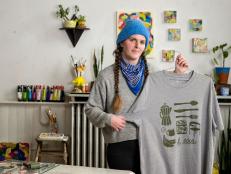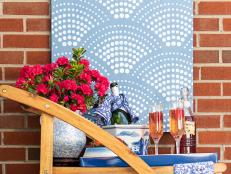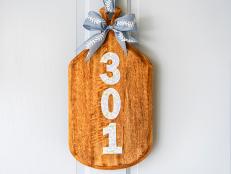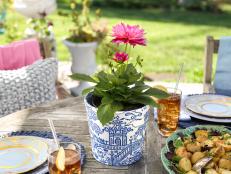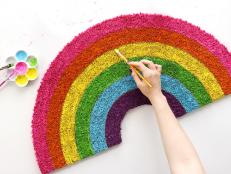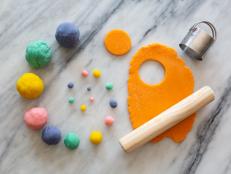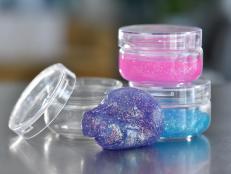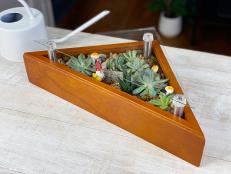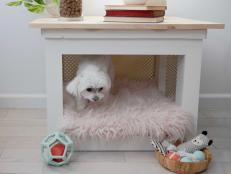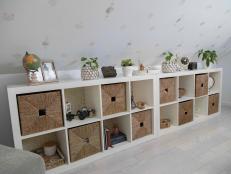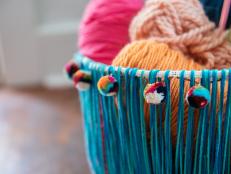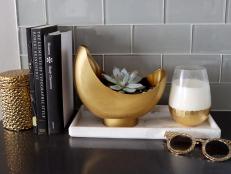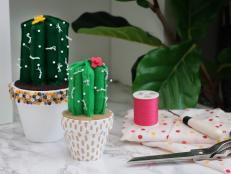How to Make an Upcycled Coffee Table
Salvaged wood and architectural remnants are prime candidates to be repurposed as furniture. In the case of this table, pieces of an old rope bed and a beadboard door are upcycled into a functional and one-of-a-kind coffee table.
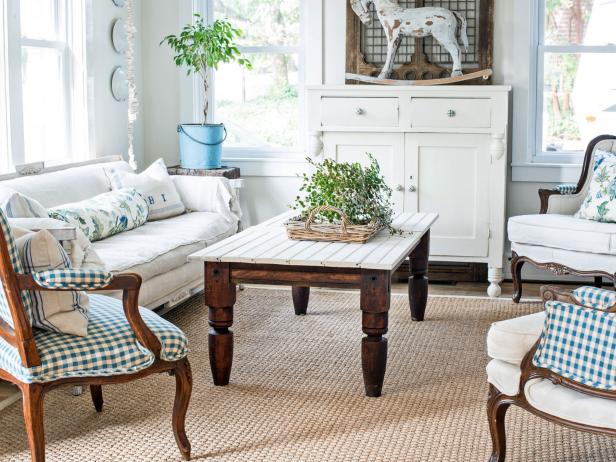
Marian Parsons

Materials Needed
- 4 posts or spindles for table legs, about 17-20" long
- 4 pieces of salvage wood for table's apron (cut to desired dimensions)
- salvage boards (enough for coffee table's top with a 2" overhang on all four sides)
- 1" x 4" wood scraps (at least as wide as table, to use for inside supports)
- brad nailer with 1-1/2" brads
- chop saw
- combo square or ruler
- tape measure
- pencil
- drill equipped with driver and bits
- 2" screws
- bar clamp (optional)
- medium- and fine-grit sandpaper
- polyurethane or water-based clear finish/sealer
Cut Legs to Size
When working with salvaged wood, most of the time, pieces aren't uniform. Use a tape measure to measure desired height of coffee table legs (17-20" is standard.) Mark with a pencil and draw a straight line, using a combo square or ruler as a guide (Image 1). It's important that the line is straight and measurements are accurate, so table sits level. Cut along line with chop saw (Image 2). Repeat on three other legs. Tip: Cut the first one and use it as a guide for marking and cutting the other three.

Marian Parsons

Marian Parsons
Attach Legs and Apron to Supports
To support salvage wood, support pieces made out of new wood will be attached to the interior of the table. On a flat work surface, lay out table legs and salvage piece for one long side of the apron. Use four 1x3 wood scraps, cut to about 18" long to attach legs and apron piece together. When attaching support board to one side, leave 1-2", depending on size of legs, for a place to screw in apron for short sides. Repeat with all four legs. Cut two 1x3 pieces of new lumber to desired length to create short sides of table apron. Use 1-1/4" screws to attach to long sides of table, inserting screws through ends of the new board.

Marian Parsons
Nail Salvage Wood Into Frame
Cut two pieces of salvage wood to same width as short-side apron pieces. Tack into place with brad nailer, hiding the screws and new wood.

Marian Parsons
Screw Apron Into Supports
Cut two more 1x3 pieces of wood to measurement of interior width of table. Put two supports in the interior of table, equal distance from the center, and clamp into place. Secure with 2" screws inserted through apron. Repeat on other side. These boards will provide additional support for the top, since coffee tables can sometimes be used as extra seating.

Marian Parsons
Attach Boards to Create Tabletop
Cut salvage wood to size to make a tabletop. The top should have approximately a 2" overhang on all four sides. Arrange salvage wood and nail into place with a brad nailer into apron and supports. To secure even further, insert screws through supports on the underside of table. Tip: Antique tongue-and-groove bead board is a great candidate for a salvage tabletop.

Marian Parsons
Apply Finish
Sand and clean up salvaged wood. Paint and/or apply a polyurethane, water-based or oil finish to waterproof and protect surface (Image 1). Allow finish to completely dry (Image 2). Tip: When using pieces of wood with old chipping or pealing paint, it could contain lead. Follow safety guidelines on EPA website for sealing lead-based paint. Add a plant, stack of books or other decorative items and enjoy your one-of-a-kind coffee table for many years to come (Image 3).

Marian Parsons

Marian Parsons

Marian Parsons







